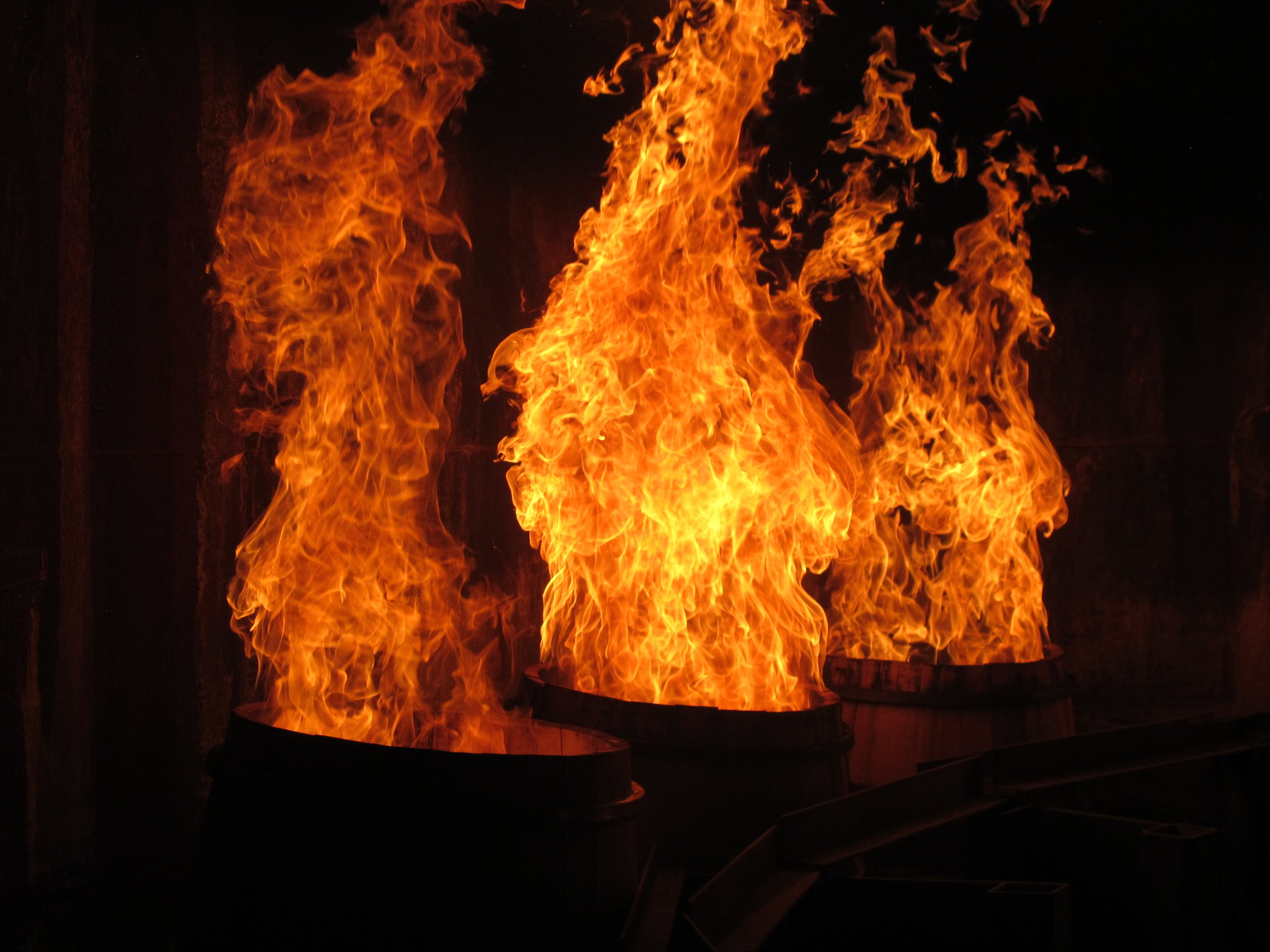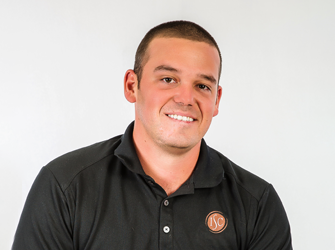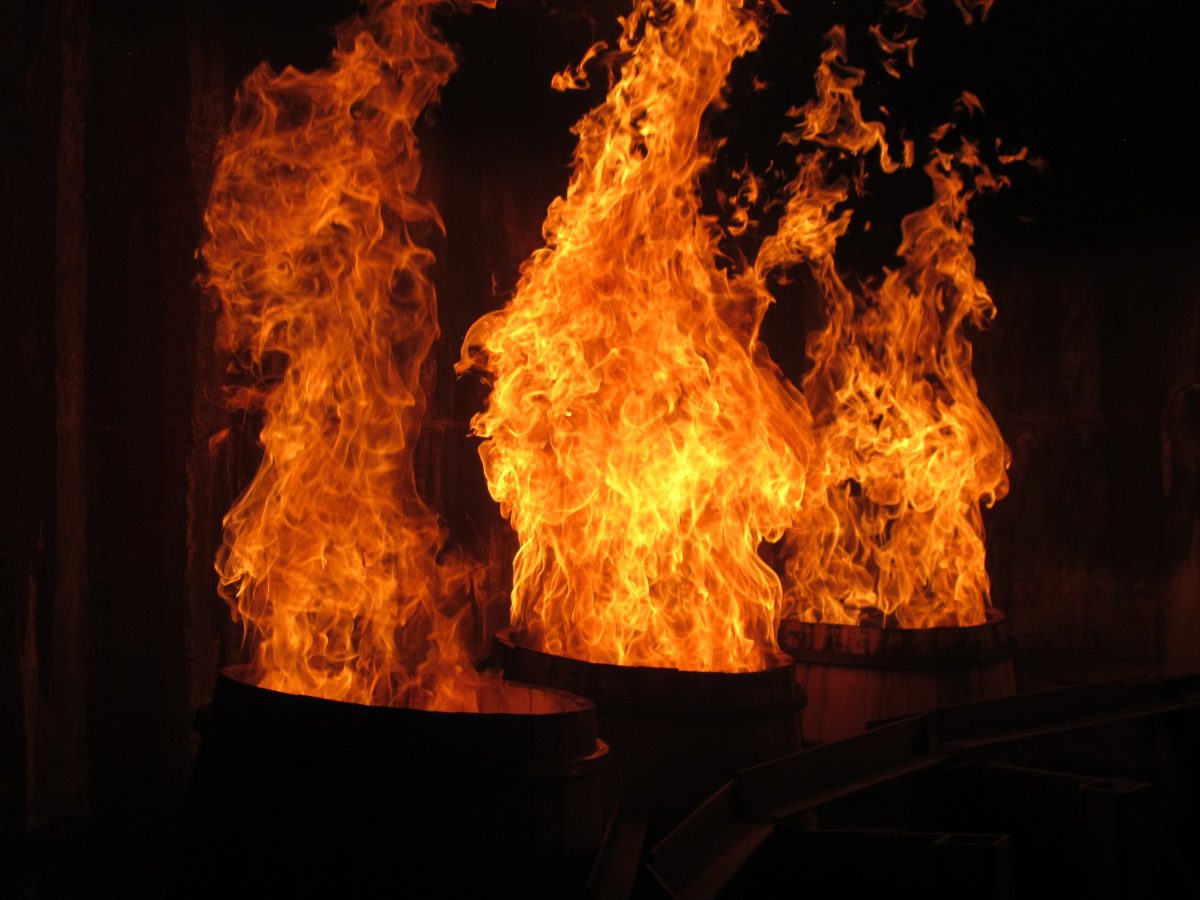Igniting Flavor: The Evolution of the Charred Barrel
Andrew Wiehebrink, Director of Spirit Research and Innovation
Charring a new white oak barrel has long been one of the most captivating moments of the whiskey-making process. There’s just something about seeing that barrel igniting that captivates bourbon enthusiasts and non-bourbon drinkers alike.

There’s also plenty of mystique around the practice, especially when it comes to how charred barrels came to be. Where did it start? When did it start? Which distiller did it first? While it’s now a federally mandated requirement for bourbon in the U.S., even in countries where it’s not required, charring is still the go-to method for treating virgin oak barrels.
Long before regulations came into play, distillers were already using charred barrels. There are a lot of “tales” about the origins of this practice. As someone close to the barrel making process, I have my own theory, not necessarily a unique one and perhaps even a bit erroneous, but one worthy of consideration.
A common story is that charred barrels were used to sanitize barrels that previously held other goods like fish or vinegar. And while the sanitation theory sounds logical on the surface, I have a hard time buying into it. Simply burning a barrel wouldn’t reliably remove all lingering flavors, especially if the previous use was to hold some kind of liquid. Whiskey-making is too demanding a process to risk spoiling it by using poorly cleaned barrels that once held something else. I like to believe whiskey makers back then were a bit more particular.
To me, the origin of the charred barrel feels more like a natural evolution of the craft itself. Making barrels has always required heat. In traditional cooperage, barrels are formed over an open flame to bend the staves into shape. It's easy to imagine a barrel getting a bit too hot — maybe even catching fire briefly. Given how closely coopers and distillers worked together, if a distiller detected a better flavor from one of those “accidentally” charred barrels, that feedback would’ve made its way back to the cooper quickly.
Even a small application of heat to oak can alter the flavor significantly. We have made the occasional experimental barrels that have no toast, no char, and let me tell you — it doesn’t go well. The distillate tends to suffer. Even a light toast profile, similar to what would have been applied during bending, would have noticeable effects on flavor. This leads me to believe that the evolution of heat treatment, all the way up to charring, would have happened very quickly.
Charred barrels were no doubt in existence well before large scale whiskey production began in the U.S. and this would have been knowledge settlers would have brought with them to the new world. The earliest written reference we have to charred barrels dates back to 1826, when a Kentucky grocer specifically ordered whiskey aged in barrels “charred on the inside to 1/16th of an inch.” This specificity indicates not only familiarity with the process, but that people were already experimenting with heat levels. This was over 25 years after Kentucky became a state, indicating that well before being mandated by the government, heat treatment was widely used to improve flavor of distilled spirits.
The char level system we use today wasn’t established until the late 1950s. It emerged as distillers began demanding more consistency and quality control from the cooperage industry. One could argue this shift was fueled by decades of solid research in the field of distilled spirits — some of which began in the early 1900s. While most of that early work focused on the composition of whiskey rather than maturation (nor more specifically char level), one paper from 1908, “A Study of the Changes Taking Place in Whiskey Stored in Wood,” details experimental whiskey that was laid down in “heavily charred” casks. As far as I know, it’s the first documented instance where charring is described as a varied and deliberate treatment of the barrel.
Shortly after the introduction of a standardized charring system, the first scientific paper linking flavor changes to char levels was published in the 1960s and the research hasn’t stopped since. In fact, we still actively study how different char levels — and combinations of toast and char — affect spirits over time. While the foundation of the charring system developed in the ‘50s hasn’t changed much, our understanding of what happens to char levels in different climates, warehouses, and with different wood sources continues to evolve.
So, while there is still some mystery in the history, one thing’s clear: charred barrels didn’t become a standard because of a federal mandate. Charred barrels became the standard because they make whiskey better.
Questions about char level or how charring affects flavor development in your distilled spirits? Email me to discuss your unique barrel solutions.

Andrew Wiehebrink
R&D Spirits Division

